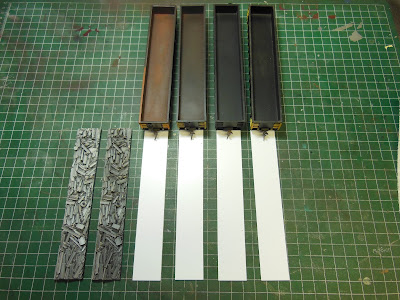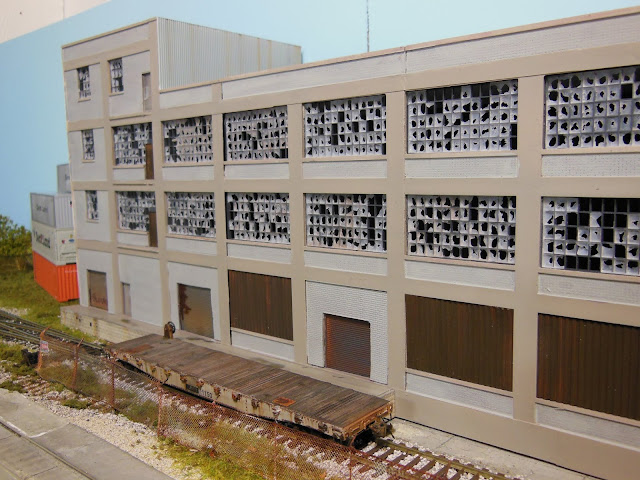This industry is in a fairly prominent location on the layout, as it's directly opposite the doorway into the room. It could be one of the first things seen by anyone entering.
I've been thinking for some time that the siding at MidWest Plastics is much closer to the GT main than I really would like it to be, so some improvements in this area should be forthcoming. I can't change the location of the GT main and passing siding, so I think I'm going to be making some changes to the industry building itself, which would then allow me to move the siding further away.
I do like the total length of this industry, which is about 46 inches altogether. That converts to something like 333 feet in HO scale. The white steel sided building where the cars would be unloaded measures about 5.25 inches deep, but I think I'll be able to reduce that by 2 inches or so. Doing so will then let me move the siding 2 inches away from the GT main. Then I could finally add in the much needed track ballast, scenic ground cover, etc.
Photo taken from the room entrance, there's MidWest Plastics across the back wall of the layout. On GT tracks in the foreground are 2 cylindrical hoppers I've weathered for Sean Steele
In the photo below, I could possibly slide the entire industry further to the right to allow the siding to run the entire length of the buildings.
Midwest Plastics, including the brown brick structure at the far end totals about 46 inches in length, and provides spots for 3 or 4 railcars.

















